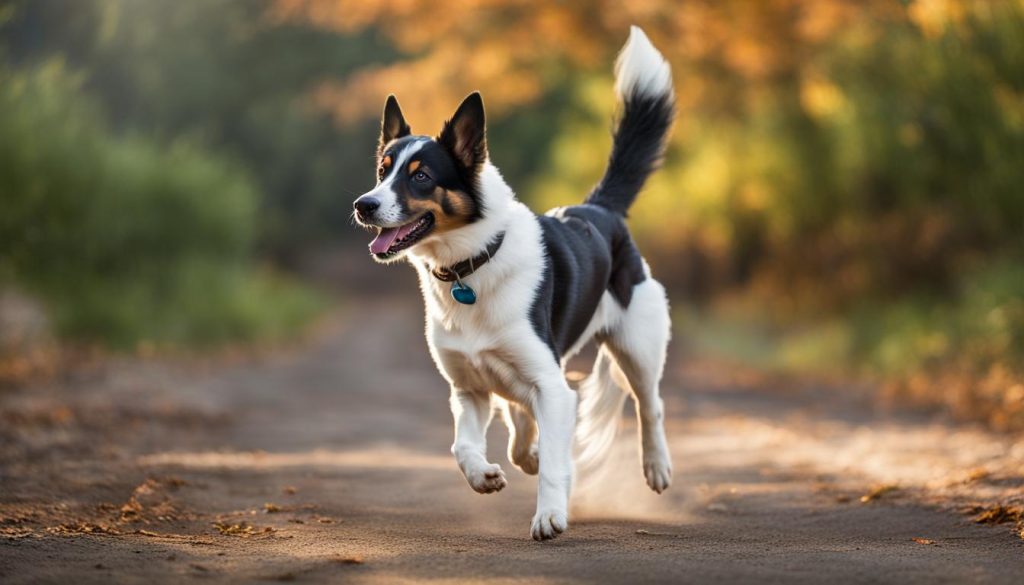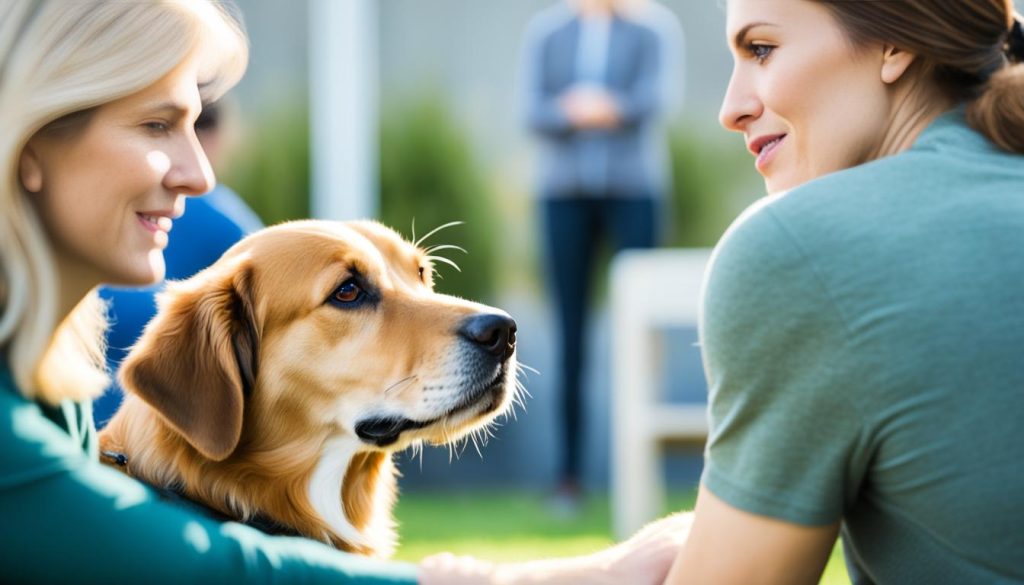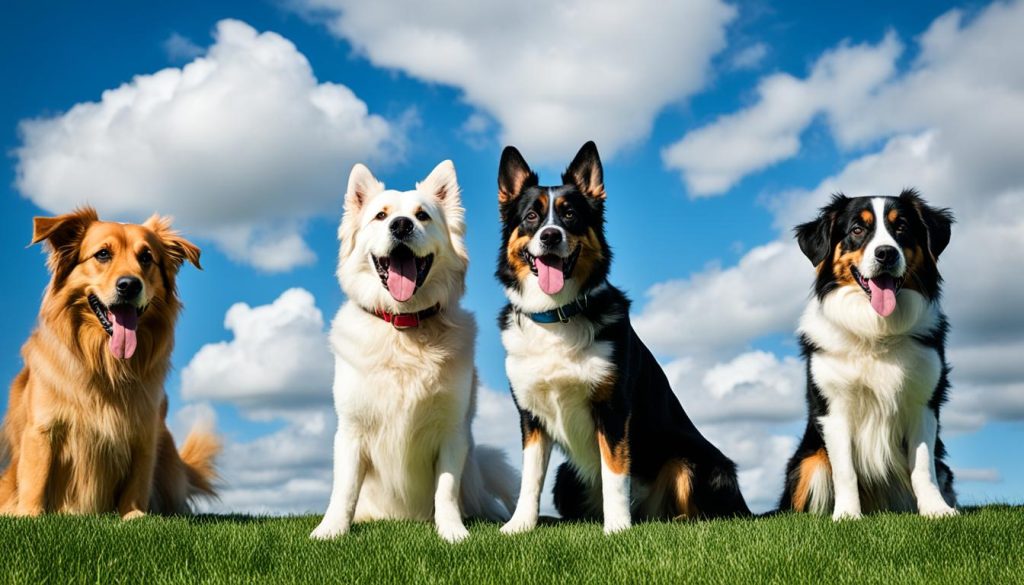When you look into your pet’s eyes, you see a family member. Their safety and happiness are in your care. Training a puppy or a full-grown dog, you start a journey together. This journey is about basic dog obedience training. It’s about forming a bond. This bond comes from understanding essential dog training commands.
Knowing the important dog behaviors to teach changes daily life with your pup. It makes coming home to their happy wags special. It feels great to have a well-behaved friend in public. Experts at 225 Sheldon Drive say it’s perfect to start anytime. Teaching your dog the best commands to teach your puppy opens up a new world of understanding.
Key Takeaways
- It’s best to start dog training early, but any time is good to begin.
- Concentrate on vital behaviors and commands to train effectively.
- Training strengthens trust and bond, beyond just obedience.
- A trained dog ensures safety and peace at home and outside.
- Getting help from experts like those in Cambridge at Sheldon Drive can improve your training.
The Fundamentals of Training Your Pup
Starting to teach your dog essential commands means learning the importance of positive reinforcement and starting early. It’s as much about teaching must-know commands for dog owners as it is about building a strong relationship. This relationship helps with all future training.
The Importance of Positive Reinforcement
Positive reinforcement is key for effective training. It highlights using rewards to encourage good behavior. Unlike punishment, it helps rather than harms your relationship with your dog.
Giving your dog treats, toys, or praise helps them learn faster. Always being consistent with rewards is crucial for success.
Starting Training at the Right Age
Puppies start learning the moment they join your family, usually around 8 weeks old. This is the best time to teach them basic manners and training your dog essential commands. Early training plants the seeds of obedience and trust.
Keeping Training Sessions Short and Productive
Puppies have short attention spans, similar to young kids. Short, focused training sessions work best. A 10-minute lesson on one or two commands keeps your dog engaged.
As your puppy learns, they’re not just picking up commands. They’re learning how to learn. With your calm guidance, these moments turn into a lifelong bond. This commitment is a mark of a dedicated dog owner.
Essential Command: Sit
Starting with basic dog obedience training is crucial. The “Sit” command is fundamental. It’s the first command to teach and opens the door to advanced training. It’s not just a trick; it ensures safety and discipline.

Why Mastering ‘Sit’ Is Crucial for Safety and Discipline
“Sit” does more than just teach obedience – it keeps your dog safe. Without a leash or a fence, the “Sit” command can control your pet. It prevents them from jumping on people or running off through an open door. This command is key for enforcing discipline and improving their focus on your signals.
Step-by-Step Guide to Teaching ‘Sit’
Teaching your dog to sit requires patience and consistency:
- Get your dog to sit by holding a treat above their nose. Moving the treat back makes them sit.
- When their bottom touches the ground, immediately give them the treat and lots of praise.
- Start saying “Sit” as they begin to sit down. This connects the word with the action.
- Gradually stop using treats. Switch to only hand signals or verbal commands.
- Increase how long your dog sits and introduce distractions. This helps them learn to sit anywhere.
Using these steps, you’re not only teaching them basic commands. You’re also preparing them for more complex training. Each dog learns at their own pace. Your support makes a big difference in their training journey.
Essential Command: Look or Watch Me
Being a dedicated pet parent means learning important dog behaviors to teach. One key command is ‘Look’ or ‘Watch Me’. It helps your dog concentrate, even with distractions.
In crowded places or at busy gatherings, it’s precious. Your dog learns to ignore distractions and watch you. Let’s learn to teach this important command, based on training tips for dog owners:
- Start in a quiet space to establish a baseline of attentiveness.
- Hold a treat between your eyes and say ‘Look’ or ‘Watch Me’, rewarding them as soon as they make eye contact.
- Gradually increase the level of distraction once your dog reliably locks eyes with you.
- Practice this command regularly, ensuring it becomes a reflexive response.
The ‘Look’ or ‘Watch Me’ command is key for more than commands. It helps in making outings better and safer. By using these training tips for dog owners, you’ll see big improvements in your dog’s behavior.
Teaching your dog to follow this command does more than teach obedience. It strengthens your bond with your special friend.
Essential Command: Stay or Wait
Learning the ‘Stay’ or ‘Wait’ command is key in essential dog training techniques. It’s a top skill for dog owners, ensuring safety and discipline. This command is helpful in many situations, like waiting at a street corner or when guests come over. Now, let’s look at why it’s beneficial and how to make it stronger.
How ‘Stay’ Command Benefits Both Owner and Dog
Using the ‘Stay’ command helps your dog stay calm and patient in different situations. It gives owners peace of mind too. This command is vital for controlling your dog’s location and keeping them safe, whether you’re at home or in busy places.
Techniques for Reinforcing the ‘Stay’ Command
Improving the ‘Stay’ command starts with simple steps in a safe place. Begin with short periods and small distances. Reward your dog for staying put. Here is a guide to follow:
- Have your dog sit or lie down.
- Say ‘Stay’ and show a hand signal, like an open palm facing them.
- Step back slowly. Reward them if they stay.
- Slowly make them stay longer before rewarding.
- Increase the distance between you, but come back to reward them.
Consistency matters a lot in training your dog to ‘Stay’. Short, regular training times work best. They help your dog learn to stay for longer and at farther distances. Training takes effort, but the strong bond and obedience are worth it.

5 Essential Commands Every Dog Owner Should Teach Their Pup
In basic dog obedience training, focusing on dog training commands boosts your pup’s safety and listening skills. The ‘Come’ or ‘Here’ command is key for getting your dog back when called. The ‘Leave It’ command stops them from touching things they shouldn’t. Both commands are crucial for everyday safety.
Essential Command: Come or Here
The ‘Come’ or ‘Here’ command is fundamental in essential dog training techniques. Start training where it’s quiet and distraction-free. Then, move to busier places as your dog gets better. Use treats or their favorite toy to encourage them. Always praise them when they come back to you. This command can save your dog from dangerous situations.
Implementing the ‘Come’ Command Effectively
For the ‘Come’ command, being consistent is crucial. Pick a word or phrase for the command and always use it. Practicing daily helps your dog remember what to do. Aim for your pup to follow the command, no matter the distractions around them.
Essential Command: Leave It
The ‘Leave It’ command is vital for your pup’s safety. It stops them from grabbing dangerous items or chasing wildlife. This command tells your dog to ignore things like food on the ground or squirrels during walks.
When and How to Use the ‘Leave It’ Command
Use the ‘Leave It’ command before your dog goes for something. Offer a better treat in exchange, and praise them when they listen. This teaches them that listening to you is the best option. Over time, your dog will understand that ‘Leave It’ means they should always obey for a greater reward.
By focusing on these essential dog training techniques, you’ll build a safe and loving relationship with your dog. Learning important dog behaviors to teach ensures your dog listens and stays safe.
Conclusion
Learning the 5 Essential Commands Every Dog Owner Should Teach Their Pup is about more than manners. It creates trust and safety that helps both you and your dog for many years. Make teaching your dog essential commands a part of your daily life. And remember, consistency is key. Always use the same words and encourage your family to do the same. This makes your communication with your dog clear and dependable.
Practicing regularly is as crucial as being consistent. Keep reinforcing these commands to make them a part of your dog’s instincts. Commands like ‘Sit’ before meals or ‘Stay’ when visitors come will quickly become habits for your pup. Also, using these training tips for dog owners will make each session more effective. This brings you closer to having an obedient and well-behaved pet.
Want to improve these skills or need help along the way? Don’t hesitate to get in touch. You can call us at (519) 208-5559 or visit our dog daycare at 225 Sheldon Drive unit 16-17 in Cambridge, Ontario. Our skilled team is here to support your training work. Let’s work together to strengthen the bond between you and your pet.


